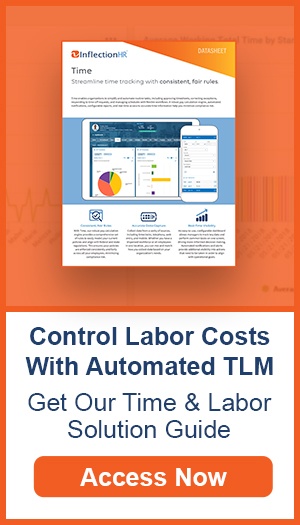Employers often face productivity challenges from inefficient scheduling. Balancing the schedules of each employee within your workforce and ensuring the necessary jobs are covered at all times can cost your HR team a lot of time. To remedy these issues, adopting modern scheduling techniques with workforce management tools can optimize coverage with best-fit employees, reduce scheduling conflicts, and allow your HR team to concentrate on other critical tasks needed to achieve success for your business.
Workforce Scheduling Tips & Tricks
The simplest way for a business to see positive results in productivity and increase profitability through labor cost management is to optimize employee schedules. There are many techniques employers can use to structure schedules for the entire workforce that help achieve a lean operating system. Here are some essential tips you can use to greatly enhance the scheduling process:
Determine the Person-Job Fit for Each Employee
When preparing the schedule for your workforce, your HR team should prioritize choosing the right employees for the job at the best time they’re needed. This ensures each job is not only filled but also accomplished effectively, optimizing the overall schedule to maximize workforce efficiency.
In addition, it demonstrates to employees how well their employer values their skills and development. By assigning employees to a schedule that is most suited to their skills, their productivity can increase.
Lastly, by assigning employees to a schedule that supports their skills, you'll be able to keep employees happier and more engaged. This not only leads to better productivity but can help employers with absenteeism in the workplace, improving their revenue, and creating a great company culture.
Attendance Incentives for Employees
It can be valuable to reward employees who show diligence and report to their assignments on time. Rewarding employees for good attendance can motivate other employees to stay on top of their schedules and contribute to projects. An incentive program can encourage unproductive employees to work harder, turning them into top performers within the company. Overall, it is a great way to prevent and manage absenteeism in the workplace, making it easier to build employee schedules.
Incentives you can offer your employees can include things such as:
- Bonuses
- Gift Cards
- Parking Passes
- Additional Vacation Time or PTO
Offer Employee Self-Service Options to Vary Shift Schedules
Employees tend to have fluctuating personal schedules that may conflict with their work schedules. Allowing employees to have flexibility within their work schedule can help optimize individual employee productivity and the workforce overall.
Some businesses may use an HCM mobile app that offers employee self-service options for managing their schedule at any time on any device. For example, an employee may request to swap their shift with another employee to resolve a scheduling conflict outside of work.
Self-service scheduling options can also allow employees to adjust their availability, request to work specific days, and request time-off, simplifying the process for the employer or scheduling manager.
Post Employee Schedules Early
One of the biggest issues that can lead to employees not showing up for work is simply that they don't have enough time to find a cover or to swap a shift. In fact, some states and localities even have predictive scheduling laws in place, requiring employers to announce and post schedules by a certain date prior to the workweek.
That is why it is important to let your workers know their schedules as early as possible so that they have as much time as possible to make adjustments. A time and labor management solution can help broadcast the most up-to-date schedules to employees. Most time and labor solutions can be accessed through workplace devices or an employee’s mobile device.
Managing Workforce Scheduling
There are many ways that employers can utilize a better workforce scheduling process to improve the productivity and profitability of their business. The most complete way to do so is with a modern, cloud-based employee scheduling software designed to automatically generate best-fit schedules for maximum productivity, all while allowing employers to execute the above tips and tricks.
If you are an employer struggling with the workforce scheduling process, an HR and payroll company may be able to help. To learn more about how Inflection HR is already helping countless businesses with their workforce scheduling, contact us today.


